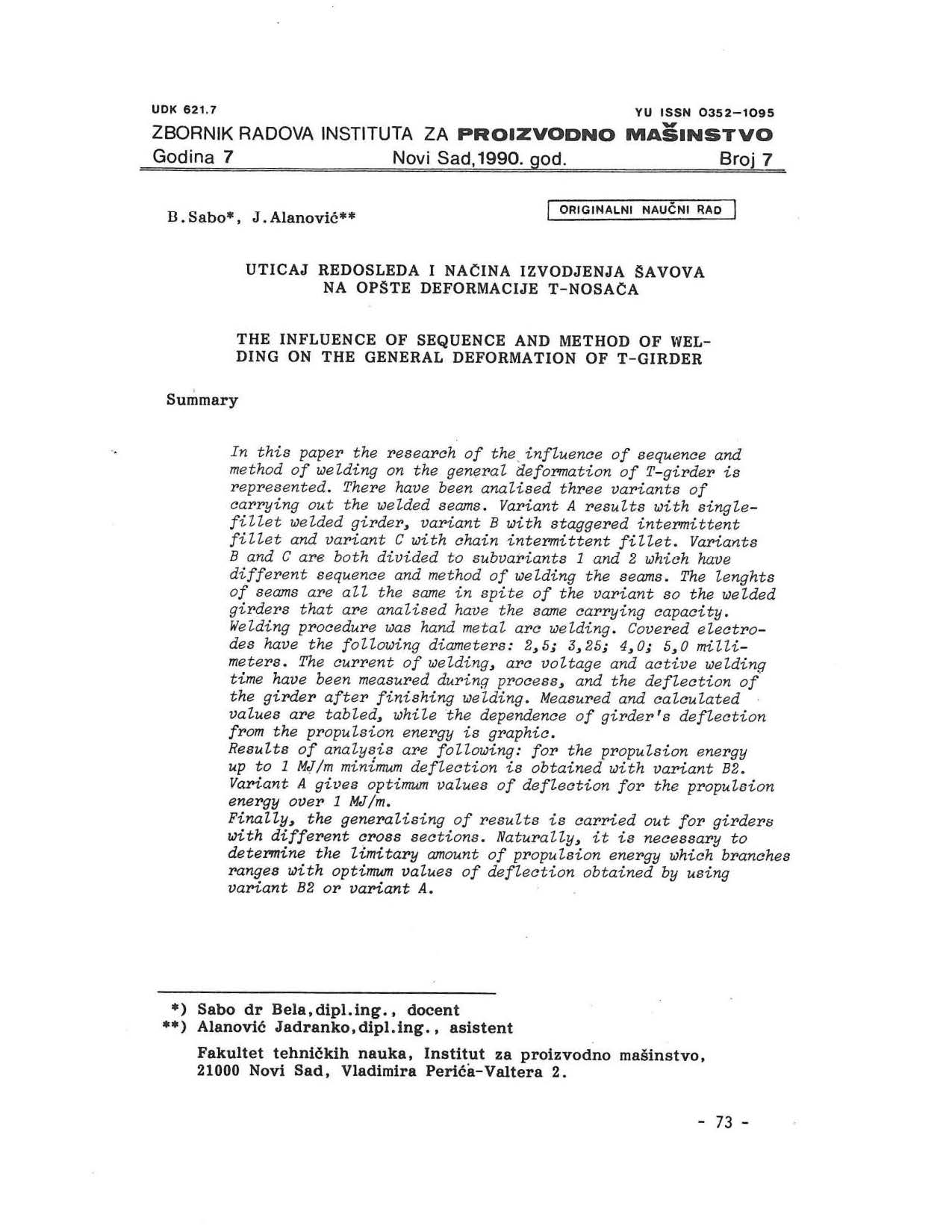The influence of sequence and method of welding on the general deformation of t-girder

Published 1990-12-01
abstract views: 19 // FULL TEXT ARTICLE (PDF): 5
Keywords
- welding,
- T-girders,
- input energy,
- deflection values
How to Cite
Copyright (c) 2023 Journal of Production Engineering

This work is licensed under a Creative Commons Attribution 4.0 International License.
Abstract
In this paper, we explore the impact of the sequence and method of welding on the overall deformation of T-girders. We analyzed three variants for executing the welded seams: Variant A resulted in a single-fillet welded girder, Variant B involved staggered intermittent fillet welding, Variant C used chain intermittent fillet welding. Variants B and C are further divided into subvariants 1 and 2, which employ different sequences and welding methods for the seams. Importantly, the lengths of the seams are consistent across all variants, ensuring that the analyzed welded girders possess the same load-bearing capacity. The welding process utilized manual metal arc welding, with covered electrodes of various diameters: 2.5, 3.25, 4.0, and 5.0 millimeters. During the welding process, measurements were taken for welding current, arc voltage, active welding time, and girder deflection upon completion. Both measured and calculated values are presented in tables, and the relationship between the girder's deflection and the input energy is graphically depicted. The results of the analysis can be summarized as follows: for input energy levels up to 1 MJ/m, the minimum deflection is achieved using variant B2. For input energy exceeding 1 MJ/m, variant A yields optimal deflection values. Finally, we generalize the results to encompass girders with different cross-sections. The research aims to determine the critical threshold of input energy, which demarcates the range of optimal deflection values achieved using either variant B2 or variant A.

